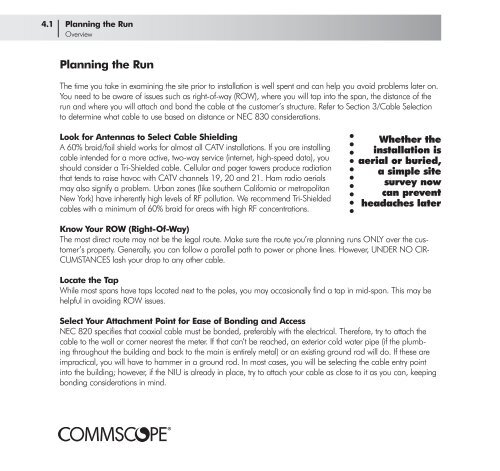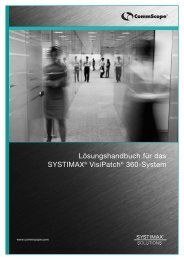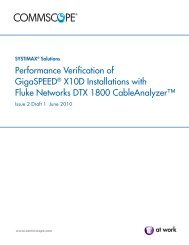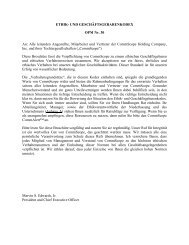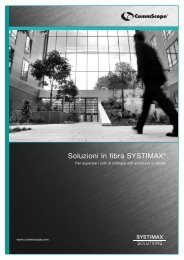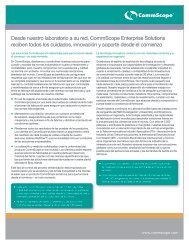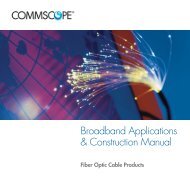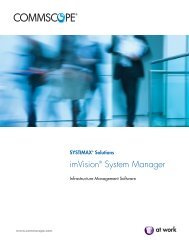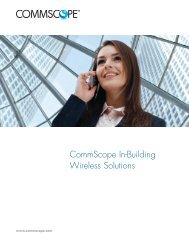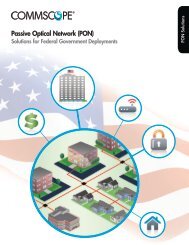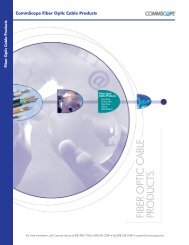Broadband Applications & Construction Manual - Public - CommScope
Broadband Applications & Construction Manual - Public - CommScope
Broadband Applications & Construction Manual - Public - CommScope
Create successful ePaper yourself
Turn your PDF publications into a flip-book with our unique Google optimized e-Paper software.
4.1 Planning the Run<br />
Overview<br />
Planning the Run<br />
The time you take in examining the site prior to installation is well spent and can help you avoid problems later on.<br />
You need to be aware of issues such as right-of-way (ROW), where you will tap into the span, the distance of the<br />
run and where you will attach and bond the cable at the customer’s structure. Refer to Section 3/Cable Selection<br />
to determine what cable to use based on distance or NEC 830 considerations.<br />
Look for Antennas to Select Cable Shielding<br />
A 60% braid/foil shield works for almost all CATV installations. If you are installing<br />
cable intended for a more active, two-way service (internet, high-speed data), you<br />
should consider a Tri-Shielded cable. Cellular and pager towers produce radiation<br />
that tends to raise havoc with CATV channels 19, 20 and 21. Ham radio aerials<br />
may also signify a problem. Urban zones (like southern California or metropolitan<br />
New York) have inherently high levels of RF pollution. We recommend Tri-Shielded<br />
cables with a minimum of 60% braid for areas with high RF concentrations.<br />
Whether the<br />
installation is<br />
aerial or buried,<br />
a simple site<br />
survey now<br />
can prevent<br />
headaches later<br />
Know Your ROW (Right-Of-Way)<br />
The most direct route may not be the legal route. Make sure the route you’re planning runs ONLY over the customer’s<br />
property. Generally, you can follow a parallel path to power or phone lines. However, UNDER NO CIR-<br />
CUMSTANCES lash your drop to any other cable.<br />
Locate the Tap<br />
While most spans have taps located next to the poles, you may occasionally find a tap in mid-span. This may be<br />
helpful in avoiding ROW issues.<br />
Select Your Attachment Point for Ease of Bonding and Access<br />
NEC 820 specifies that coaxial cable must be bonded, preferably with the electrical. Therefore, try to attach the<br />
cable to the wall or corner nearest the meter. If that can’t be reached, an exterior cold water pipe (if the plumbing<br />
throughout the building and back to the main is entirely metal) or an existing ground rod will do. If these are<br />
impractical, you will have to hammer in a ground rod. In most cases, you will be selecting the cable entry point<br />
into the building; however, if the NIU is already in place, try to attach your cable as close to it as you can, keeping<br />
bonding considerations in mind.


